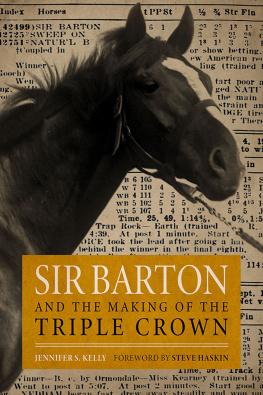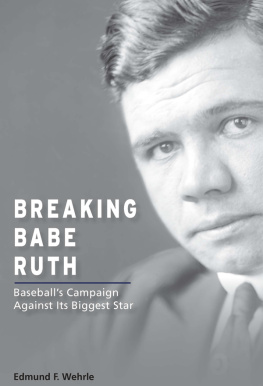

This edition is published by PICKLE PARTNERS PUBLISHINGwww.pp-publishing.com
To join our mailing list for new titles or for issues with our books picklepublishing@gmail.com
Or on Facebook
Text originally published in 1950 under the same title.
Pickle Partners Publishing 2015, all rights reserved. No part of this publication may be reproduced, stored in a retrieval system or transmitted by any means, electrical, mechanical or otherwise without the written permission of the copyright holder.
Publishers Note
Although in most cases we have retained the Authors original spelling and grammar to authentically reproduce the work of the Author and the original intent of such material, some additional notes and clarifications have been added for the modern readers benefit.
We have also made every effort to include all maps and illustrations of the original edition the limitations of formatting do not allow of including larger maps, we will upload as many of these maps as possible.
MAN OWAR
BY
PAGE COOPER
AND
ROGER L. TREAT

Historical charts and statistical information compiled by the authors from The Daily Racing Form and The Blood Horse .
TABLE OF CONTENTS
Contents
INTRODUCTION
THE READERS OF MAN O WAR are going to meet a strange, exciting personalityan individuala legend come alive. There never was another horse like Big Red and there never will be, for he was all thoroughbredand something else, too. He was always a horse you referred to as who instead of which. I know I always did, accustomed though I was to the careful, stilted requirements of what some horsemen call bloodlines language.
If you can understand that, then this book is most certainly for you. If you cant, then it is twice as surely a book you will read, and read again. For in the pages that follow, the fabulous Big Red comes alive again. So do his records and all the thrills and climaxes of his life, and the stories they told about him.
With care and accuracy and color, the authors have here set down a fascinating story. We see Man o War as a colt at play, as the most promising young star of the then-unknown Riddle Stables; we watch him hurtle to triumph in the first race of his career; we battle with him along the time-long backstretch, into the sweeping, careening turns, and then down heartbreak highwaythe home stretchas he smashes to the epic achievements that stamped him the greatest of all.
Big Red was a winner, I will always maintain, because he wanted to be a winner. He had more brains, more class, more speed, more desire to win than any other horse that ever sported silks. He had personality, and the dignity of a king. He was a great actor. Every race was a show for him, and, like all great actors, he never let his public down.
He set five records, one of which stands to this day. His average winning marginand facts, cold facts, back me up was nine and a half lengths! He was extended but once.
And there was more to Big Red than that, too. The authors of MAN O WAR have delved into the glorious genealogy of the wonder horse, and traced him back to the storied Godolphin Arabian, with the million and more blood combinationsinnumerable strains of great horses that combined to produce the super-son of Mahubah and Fair Play. Remember, too, that Man o War went on to become a tremendous sire of other magical thoroughbreds. These, too, are in the story.
Thus, for the serious student of horses, for those who must be familiar with the family backgrounds of great racers, this book is invaluable. And for those who never saw Big Red, but who know the legend, the authors recreate the greatest of them all.
But Big Red remains the greatest of them all. For my money no horse has ever touched Big Red.
Earl Sande said it another way, when he dismounted after riding MAN O WAR for the first time:
This horse, said Sande, gallops faster than other horses race.
So here you have Big Red. If you knew him, you will be happy to meet him again; if you never saw him thundering to racing glory, you will see him now. Every reader of this stirring and warm and human book will have found a friend.
BOB CONSIDINE
MAHUBAHS COLT
Chapter I
IT WAS NEAR MIDNIGHT. The watchman thrust his hands into his pockets to warm them from the evening mist. He sniffed the air, heavy with the smells of leather, soap, hay, manure and the warm bodies of horses, and, fainterdrifting in through the mistthe scent of new grass in the meadows and yellowing birches. It was almost April, and all over the big Kentucky stud farm he could feel the languid stir of spring.
Pushing himself upright with a thrust of his shoulder against the side of a stall door, he began the rounds again, shuffling quietly past the stalls of the yearlings, the mares with foals nuzzling against their sides, the barren mares, to the end of the stables set apart for the stallions. Fair Play was restless; the watchman heard the horse rustling his straw and pawing at the clay. Listening for a minute, he peered into the stall where he could see the splendid outline of the stallion blacked in by the moonlight. Fair Play flicked his ears and turned toward the door; then he lifted his head and snorted as though in his dream he had heard the bugle.
Whoa, boy, whoa! called the watchman softly. This aint no Pimlico. Go to sleep.
He waited while Fair Play shifted to the other side of the stall. His tail drooped and his small pointed ears relaxed.
When the watchman returned he heard a commotion in the stall of the mare, Mahubah. For several days they had been waiting for her to foal. She had been treated like an expectant princess, examined by expert hands, bathed and brushed and rubbed, her eyes and nostrils sponged in warm water. He padded back along the path, looked into her stall, then ran across the yard to the house of the superintendent to tell him that the mares time had come. The date was March 29, 1917.
In a few minutes the night was full of hurrying feet. Lights flashed in Mahubahs stall. The grotesque shadows of Mr. Kane, the superintendent, the vet, and half a dozen grooms and stable boys criss-crossed against the wall.
Its a colt, the superintendent said.
Chestnut, the vet added as he wiped off the foal with a handful of clean straw and sacking. And hes got his grand-daddy Hastings star on his forehead.
After they had cleaned the stall and taught the baby colt to suck his mothers milkhe was bigger than most foals and so strong that he scarcely wobbled when he scrambled up on his feet for his first mealMr. Kane went home for a cup of coffee. He needed it. This was no routine foaling; these colts of Nursery Stud represented years of careful planning and the investment of more money than he liked to consider. Major August Belmont (and there were many horse lovers who agreed with him) considered the colts sire, Fair Play, the best horse he ever had owned. The golden stallion had won more than $86,000 for him and had been the only horse to threaten the fabulous Colin. If it had not been for Colin, Fair Play would have been one of the great racers of all time. He had been foaled at Major Belmonts own Nursery Stud, a son of the devil, Hastings, and grandson of the famous Spendthrift. The Major always liked Hastings in spite of the fact that he was a hellion. He fought the saddle and bridle so fiercely that he exhausted every exercise boy on the place. At the post he was so eager to run that he worked himself into a frenzy.
Next page









